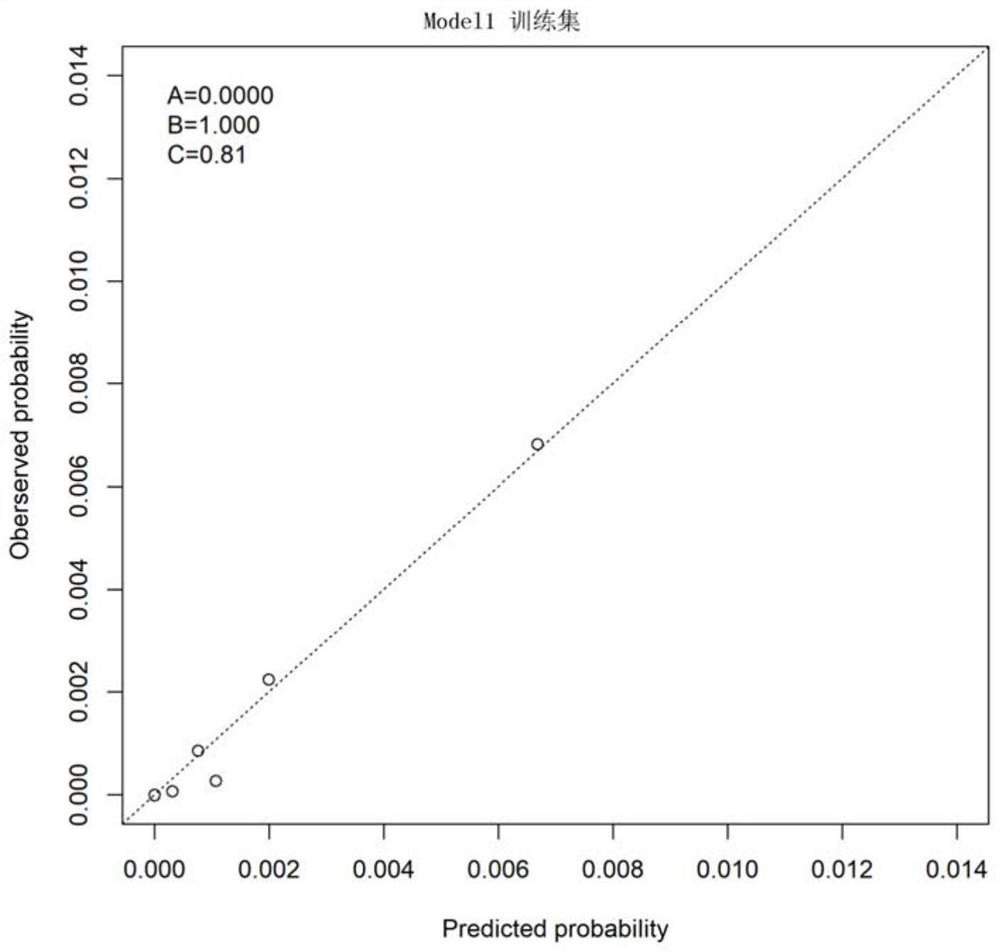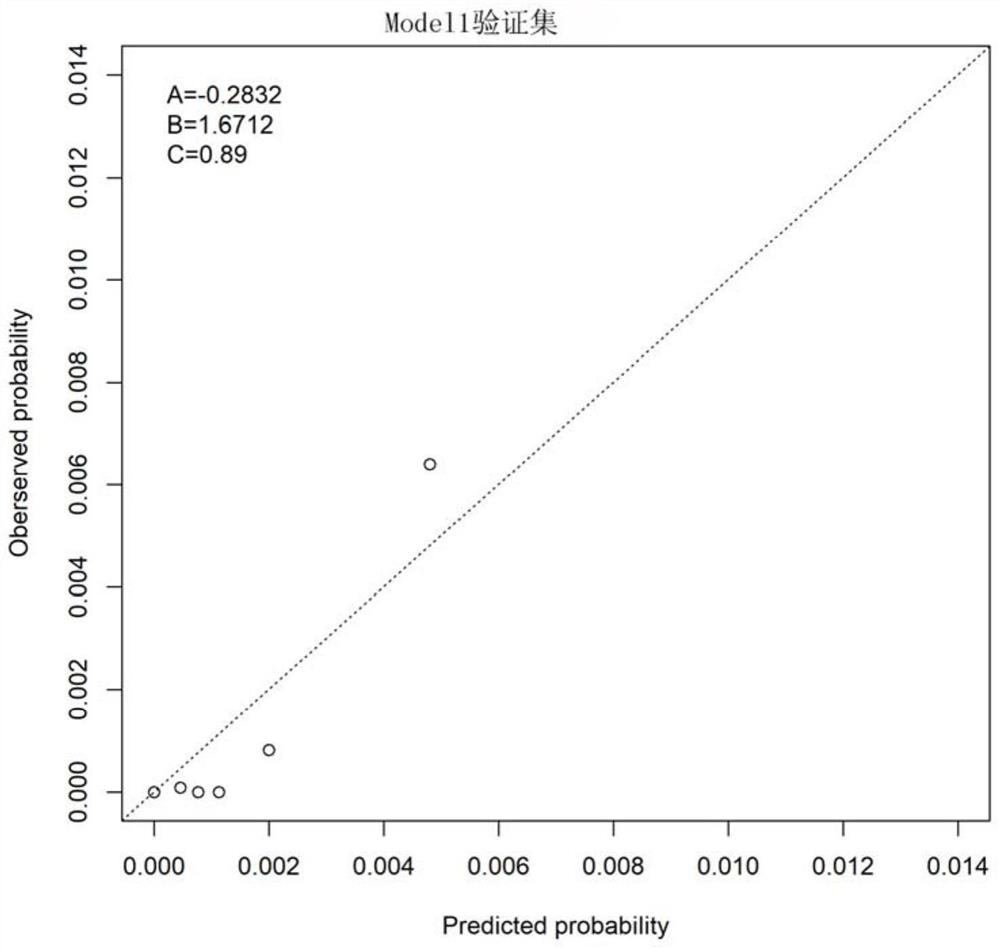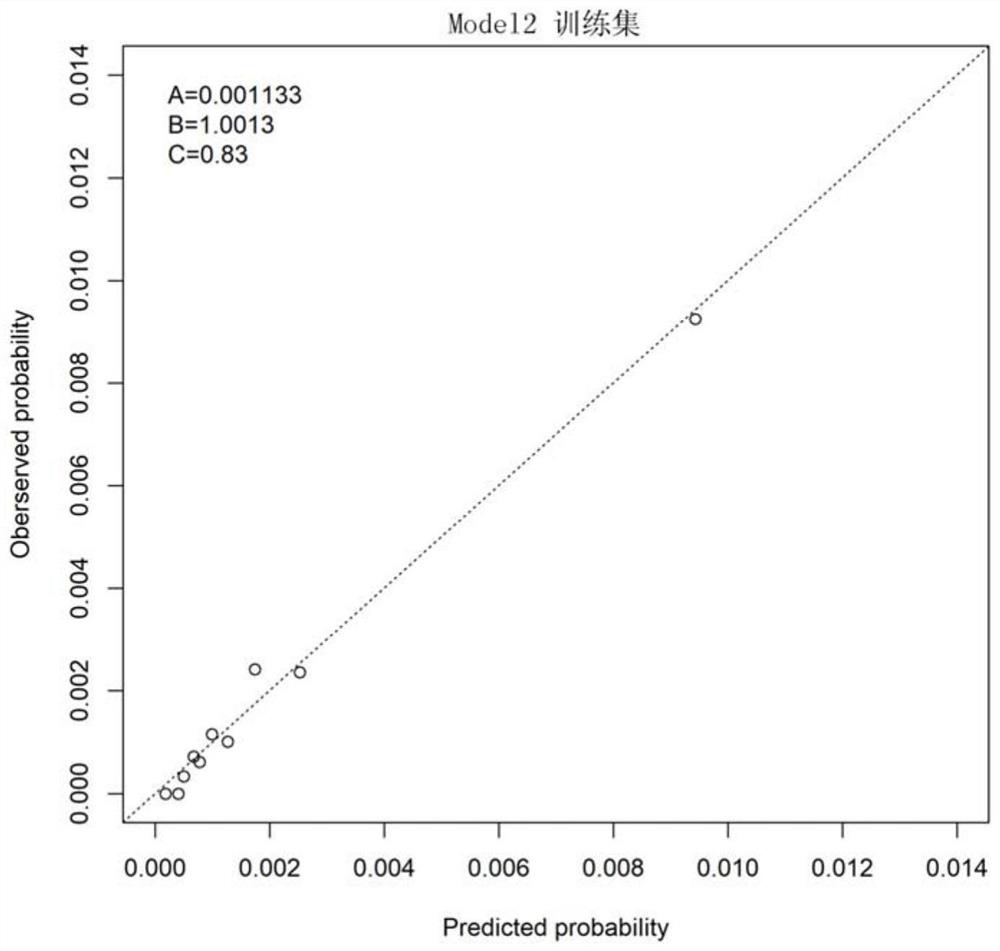Esophageal squamous carcinoma risk prediction system
A technology for esophageal squamous cell carcinoma and risk prediction, applied in medical informatics, medical data mining, medical simulation, etc., can solve the problems of reducing the accuracy of risk calculation, low quality of evidence classification, and ineffective use of survival data. Achieve the effect of excellent predictive ability and good discrimination ability
- Summary
- Abstract
- Description
- Claims
- Application Information
AI Technical Summary
Problems solved by technology
Method used
Image
Examples
Embodiment 1
[0056] Embodiment 1 The use method of the risk prediction system of the present invention
[0057] The user enters the aforementioned age, gender, number of lesions, smoking status, drinking status, BMI, salted food intake, obvious lesions, and mild to moderate dysplasia through the input module, and the calculation module can bring the aforementioned information into Model1 or Model2 calculates and obtains the probability of esophageal squamous cell carcinoma, which is presented to the user through the output module.
[0058] The model of the present invention is a key technical feature of the risk prediction model for esophageal squamous cell carcinoma, which is directly related to the prediction effect; the prediction effect of the model of the present invention will be further described in the form of an experimental example.
[0059] 1 Inclusion criteria
[0060] This study took the population participating in the esophageal cancer screening project in Shandong Province ...
PUM
 Login to View More
Login to View More Abstract
Description
Claims
Application Information
 Login to View More
Login to View More - R&D
- Intellectual Property
- Life Sciences
- Materials
- Tech Scout
- Unparalleled Data Quality
- Higher Quality Content
- 60% Fewer Hallucinations
Browse by: Latest US Patents, China's latest patents, Technical Efficacy Thesaurus, Application Domain, Technology Topic, Popular Technical Reports.
© 2025 PatSnap. All rights reserved.Legal|Privacy policy|Modern Slavery Act Transparency Statement|Sitemap|About US| Contact US: help@patsnap.com



